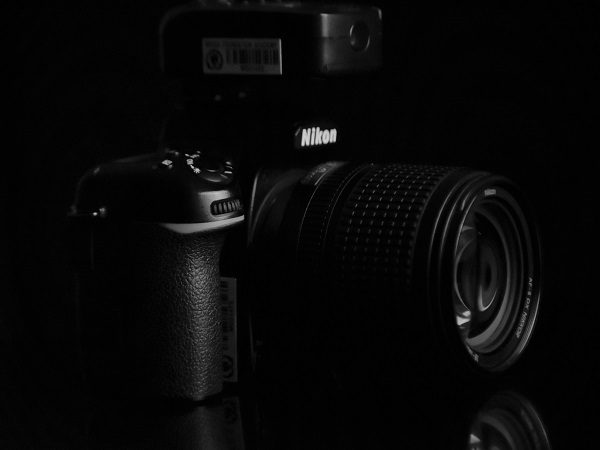Introduction
In the fast-paced world of photography, the advancements in camera sensor technologies have played a pivotal role in shaping the way we capture and immortalize moments. From the early days of film photography to the digital age, camera sensors have undergone a remarkable evolution, unlocking new possibilities and pushing the boundaries of what we can achieve with our cameras.
One of the key aspects that photographers and enthusiasts alike are keen on understanding is the latest innovations in camera sensor technologies. These advancements not only impact the quality of images but also influence the overall photography experience. In this article, we’ll delve into the intricate details behind the lens, exploring the cutting-edge developments in camera sensor technologies.
Evolution of Camera Sensors:
From Film to Digital
To truly grasp the significance of the latest camera sensor technologies, it’s essential to take a trip down memory lane and explore the evolution of camera sensors. In the early days of photography, film cameras reigned supreme. Photographers relied on light-sensitive films to capture images, a process that involved chemical reactions and meticulous darkroom techniques.
However, the digital revolution transformed the landscape of photography. Digital cameras replaced film cameras, introducing electronic sensors that could convert light into digital signals. This marked a paradigm shift, offering photographers instant feedback and the ability to capture and share images with unprecedented ease.
Megapixels and Beyond:
The Resolution Race
One of the most noticeable aspects of camera sensor technologies is the incessant race for higher megapixel counts. Megapixels determine the resolution of an image, influencing the level of detail that can be captured. As technology advances, camera manufacturers continually push the limits, offering cameras with staggering megapixel counts.
While higher megapixels can lead to sharper images, it’s crucial to strike a balance. The file sizes of high-resolution images can be substantial, requiring more storage space and processing power. Moreover, the quality of the lens and the size of the sensor also play pivotal roles in determining the overall image quality.
Sensor Size Matters:
Understanding Sensor Formats
Beyond megapixels, the size of the camera sensor is a critical factor influencing image quality. Camera sensors come in various formats, each with its own set of advantages and limitations. The two main types of sensor formats are full-frame and crop sensors.
Full-frame sensors, mimicking the size of a 35mm film frame, offer superior image quality, especially in low-light conditions. On the other hand, crop sensors, found in many entry-level and mid-range cameras, provide a more compact and lightweight option. Understanding these formats is essential for photographers looking to make informed decisions based on their specific needs and preferences.
Low Light Performance:
The Role of Sensor Sensitivity
For photographers who often find themselves shooting in challenging lighting conditions, the sensitivity of the camera sensor becomes a crucial consideration. Measured in ISO, sensor sensitivity determines how well a camera can capture images in low light without sacrificing image quality.
Recent advancements in sensor technology have led to improved low light performance. Cameras with higher ISO capabilities can produce cleaner images in dimly lit environments, reducing the need for additional artificial lighting. This is a game-changer for photographers who specialize in genres such as astrophotography or indoor event photography.
Dynamic Range:
Capturing the Full Spectrum of Light
Another critical aspect of camera sensor technologies is dynamic range, which refers to the ability of the sensor to capture a wide range of tones in a single image. A camera with good dynamic range can retain details in both the highlights and shadows, resulting in images that are visually striking and true to life.
In recent years, advancements in sensor design and processing algorithms have contributed to expanded dynamic range capabilities. This improvement allows photographers to capture scenes with high contrast more effectively, preserving intricate details in both well-lit and shadowy areas.
Autofocus Innovation:
Speed and Accuracy
Beyond image quality, the latest camera sensor technologies also address the need for faster and more accurate autofocus systems. Autofocus is a critical component for photographers who shoot fast-paced subjects, such as sports or wildlife. Recent innovations in sensor design and phase-detection technology have led to faster and more reliable autofocus performance.
Hybrid autofocus systems, combining contrast-detection and phase-detection technologies, have become increasingly common. These systems enhance the overall speed and accuracy of autofocus, ensuring that photographers can confidently capture fleeting moments with precision.
Future Trends:
What Lies Ahead for Camera Sensors
As technology continues to evolve, the future of camera sensor technologies holds exciting possibilities. One emerging trend is the integration of artificial intelligence (AI) into camera sensors. AI-powered sensors can enhance image processing capabilities, optimize settings based on shooting conditions, and even assist in real-time scene recognition.
Furthermore, there is a growing focus on improving the energy efficiency of camera sensors, allowing for longer battery life and reducing the environmental impact of photography gear. As the industry moves forward, we can expect a convergence of cutting-edge technologies, paving the way for more intuitive and powerful camera systems.
Conclusion:
The Ongoing Saga of Camera Sensor Advancements
In conclusion, the journey behind the lens involves a constant quest for innovation and improvement in camera sensor technologies. From the transition from film to digital to the ongoing race for higher megapixels, sensor size considerations, and improvements in low light performance and dynamic range, the evolution of camera sensors continues to shape the way we perceive and capture the world around us.
Photographers, both amateur and professional, find themselves at the forefront of these technological advancements, benefiting from cameras that are more capable and versatile than ever before. As we look to the future, the integration of AI and a commitment to sustainability signal a promising era for camera sensor technologies, ensuring that the art and science of photography will continue to thrive and inspire generations to come.



































